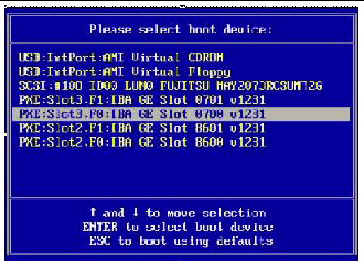How To Install Boot Block In Solaris 10

Run the installboot command to install a new boot block on that disk. Not loading a boot block will leave this disk in an unbootable state as the boot strap program is contained within the boot block. # cd /usr/platform/`uname -i`/lib/fs/ufs # installboot bootblk /dev/rdsk/c1t0d0s0 NOTE: for SunOS 5.4 and earlier, the boot block is in /usr. How do I restore the Solaris boot block without reinstalling? This may happen when installing a boot manager that comes with another operating system (such as.
How do I restore the Solaris boot block without reinstalling?
This may happen when installing a boot manager that comes withanother operating system (such as LILO from Linux) or an after-market
multi-OS boot manager. These sometimes trample's active partition,
which in our case is Solaris. Also, moving the Solaris partition with
a partition manager program such as Partition Magic requires reinstalling
the Solaris boot block. Before taking these steps, first verify
the Solaris partition is active. If it isn't, just make the Solaris
partition active and reboot. Otherwise follow the steps below.
1. Boot from CD-ROM and get the root prompt, #, as described in
the previous question, 7.1.
2. Determine the controller, disk number, and partition.
The boot disk is /dev/rdsk/c?t?d?p?
where ? is the controller #, target ID, and disk #, and partition #.
Omit 't?' for ATAPI E.g., /dev/rdsk/c0d0p0
3. Verify it's the correct device correct with prtvtoc for the drive:
This is VERY important; if it's wrong, you you may hose another partition:
prtvtoc /dev/rdsk/c0t0d0p0
(omit 't0' for ATAPI, always use p0, which means the 'entire drive').
The prtvtoc prints out the map for the Solaris partition on the hard drive,
if found.
The partitions shown on the output are actually 'slices' within the
Solaris partition.
4. Restore the boot block as follows:
E.g., for SCSI it might be:
(omit 't0' for ATAPI)
5. Finally, remove your CDROM and diskette media and type 'reboot'.
The Solaris Multiple Device Boot Menu should appear after rebooting.
If not, you can always to an upgrade (re-)install.
National instruments measurement studio download.
Note:
This procedure does NOT make your Solaris partition active again
(sometimes needed after installing another operating system, such as Windows,
on the same disk),
it just writes to your bootblock IN your Solaris partition.
To learn more about the Solaris boot process, read the boot(1M) man page.
[an error occurred while processing this directive]
# The boot program, ufsboot, is loaded from disk by the bootblock program which resides
# in the boot area of a disk partition. This program is filesystem-specific, and must
# match the type of filesystem on the disk to be booted.
# Installing bootblk
# -------------------------------------------------------------------------------------
# Depending on F.S. type, we may specify the type of boot block to be installed.
# This is mandatory if you wish to specify zfs or hsfs. The default is ufs.
installboot [ -F [zfs ufs hsfs] ]
/usr/platform/`uname -i`/lib/fs/[zfs ufs hsfs]/bootblk /dev/rdsk/${DISK1}s0
# Verifying bootblk
# -------------------------------------------------------------------------------------
# To check if our system disk has a valid boot block, read it from disk(s) and compare
# it to /usr/platform/platform_type/lib/fs/ufs/bootblk.
DISK=c0t0d0s0
dd if=/dev/rdsk/$DISK of=/tmp/bootblk.$DISK bs=1b iseek=1 count=15 conv=sync
# No differences are expected but if we have following output we may think that
# our disk contains a valid boot block
cmp /tmp/bootblk.$DISK /usr/platform/`uname -i`/lib/fs/ufs/bootblk
cmp: EOF on /usr/platform/sun4u/lib/fs/ufs/bootblk
- среда 06 мая
- 16